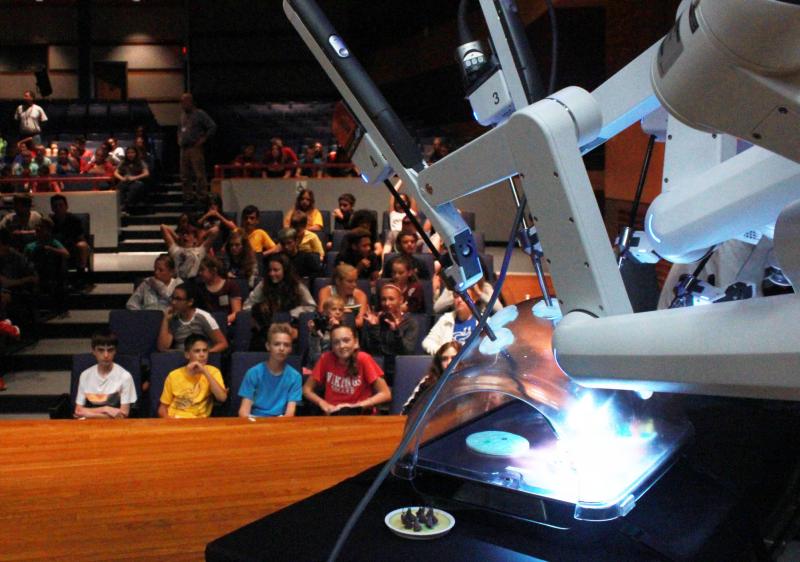Students inspired and shocked by robotic surgeries
It took all of 18 minutes for Dr. Tammy Gleeson to remove a lymph node from a patient's throat, and Wareham Middle School students were able to see how it all happened on Wednesday.
In a sped-up video of the procedure, students saw just how Gleeson, a surgeon at Southcoast Health, used a machine called the da Vinci Surgical System to perform the operation.
The videos Gleeson showed of her recent operations were taken inside of the patient's body, demonstrating exactly how the machine cut its way around tumors, lymph nodes, and cancers.
"It was somewhat disturbing," said middle-schooler Julia Elicier.
Her classmate, Breanne Dixon, disagreed. "I thought it was pretty cool," she said.
Emma Waratuke agreed with both girls, and said, "I was kind of interested and kind of grossed out at the same time. I think it's cool 'cause it's a robot and it could help a lot of people."
The da Vinci System features a magnified 3D high-definition vision system and tiny-wristed instruments that bend and rotate farther than the human hand.
"They can move 360 degrees, and I can tell you right now, you cannot move your wrists 360 degrees, right?," said Dr. Gleeson. "These instruments are more streamlined and more flexible; you can move in any direction and dissect in any direction."
Surgeons could either be in the same room or a different room while performing the surgery and controlling the instruments on the robot.
"We take out cancerous tumors in people's chests on a daily basis," said Dr. Gleeson. The auditorium was quiet while Gleason showed videos of the surgeries. When the tumors are removed from the body, they are put into a bag and taken away for research.
Gleeson and her team brought the three components of the traveling model of the machine to the auditorium.
The first component is the machine that the surgeon works under. The surgeon's face goes into the machine while he or she operates the instruments remotely.
The second machine is the system that patients' bodies are placed under. There are instruments above the body that the surgeon chooses and controls.
The final component is a screen that shows what's happening inside of the patients' body.
At the end of her presentation, students got to try the machine for themselves.
The event was held at the request of the middle school's technology professor Carl Junier. Junier felt that connecting classroom lessons with real-world applications was a good opportunity for students.















